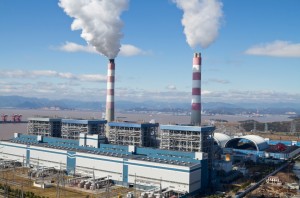The Climate and Environment at Imperial blog has moved. View this post on our new blog
by Neil Hirst, Senior Policy Fellow, Grantham Institute

China’s Energy Research Institute (ERI) releases an interesting analysis of the prospects for China’s energy production and consumption and CO2 emissions to 2050
Last November’s joint announcement of national climate targets by President Barack Obama and President of China Xi Jinping has framed the preparations for this December’s crucial Paris summit. The US is aiming to reduce its emissions by 26-28% below the 2005 level in 2025. China intends that its CO2 emissions will peak around 2030 and will use best efforts to bring that date forward. Plainly China’s energy and emissions outlook is highly relevant to the global effort to mitigate climate change and to the Paris negotiations.
The Grantham Institute, Imperial College London, is working with China’s Energy Research Institute and the NDRC on a joint project about China’s role in world energy governance. Improving international cooperation on energy policy is a first order requirement for climate mitigation.
Prof Yang Yufeng, who co-leads this project with me, is also lead author of China Energy Outlook and he has just released, through this presentation given a few days ago in Australia, the preliminary findings of its 2015 edition. (He also introduced their Outlook analysis methodology, the China 2050 Energy Calculator, which was developed independently by his team after studying the analysis platforms of other major international institutions, especially including contributions from DECC’s Energy Calculator).
These findings are of exceptional interest for the light that they shed on the questions, opportunities, and difficulties that China faces in trying to bring forward the peaking of its emissions.
From coal to renewables
The Outlook suggests that by 2050 China could represent 18.5% of world GDP. By that time China’s industrial structure will have been transformed, with the most energy intensive primary and secondary industries, which dominate today, giving way to tertiary industries at a higher end of the value chain. By then renewables should compete with coal in the mix of power generation, mainly in the form of onshore wind, photovoltaics, gasified biomas, and city waste. But it is a hard task, for China, to free itself from dependence on coal. Today coal represents 66% of energy supply but, according to the Outlook, even in 2050 it may still have more than a one third share.
Most interestingly, the Outlook also offers alternative “high”, “low”, and “medium” scenarios of when critical functions of energy, coal, oil, and gas consumption, and CO2 emissions, will peak. Coal consumption peaks in 2020 in the low case, 2025 in medium, but not until 2030 in high. CO2 emissions peak in 2025 in low, 2030 in medium (which would meet President Xi Jinping’s minimum target), and 2035 in high. We must all hope that China can find the pathway that brings this peak forward to 2025, or even before. It is tantalising to see that in the low cases coal consumption is close to flat from today and CO2 emissions from 2020.
GDP per person in 2050 ranges from $25,000 to nearly $40,000 – a level that would give Chinese citizens incomes commensurate with current levels in the developed countries. The critical issue in China, as in other parts of the world, will be to implement the low carbon options that also support the high end of the range for living standards.
The Energy Research Institute is a research body and their study does not represent Chinese government policy. Nevertheless, it throws very interesting light on the options for energy policy as perceived form within China. The full China Energy Outlook 2015, when it is published in the next half year or so, will no doubt go into much greater depth. Under the close relations between the ERI and the Grantham Institute, we plan to exchange details of the China energy models, and to work together on further refinements.